- Bhairab Naach
Bhairab Naach is an ancient masked
dance performed byNewar community in thePokhara Valley ofNepal as part of theIndra Jatra festival. Bhairab is one of the form of GodShiva .It was originated inBhaktapur and brought toPokhara while migrating. Although it is performed every 12 years in Bhaktapur, it is performed every 6 years in Pokhara valley to better save the culture.It was brought more than 236 years ago by Jitaram from Bhaktapur according to the guru Mr. Sarbagyaman Pradhananga (91 years old). From the rag (song) sung in this dance, this is proved that it was started at the time of last Malla King, Ranajit Malla.There are 12 bhairabs in this dance namely Dagini, Kwancha, Bhuccha, Bhairab, Kali Bhairab (Budi Bhairab), Indrayani, Barah, Kumari, Bishnuvi, Bramhayani, Ganga and Ganesh. Bhairab is the head of the team and controls the dance when to stop and when to start. At the day of the dance all the performer get bath and wear clothes and mask (khawpa). After wearing the mask no performer can speak until it is taken out. The dance is started at the Bhairab Temple in the evening and after a couple of rounds and puja it is taken to the hosting place where it is performed for around 6 hours including puja.At first all 12 gods dance. After the puja is complete then individual dance starts. First is Bhairab with Kwancha and Bhuccha which is like a child and adult play. It is called as Jyoti Naach. After that Bhairab, Kali, Indrayani and Barah come. It lasts almost one hour and called as Char Bhairab. It is the high energy dance and most people love to watch this part of the dance. Then comes Kumari, Bishnuvi, Bramhayani, Ganga. Then Ganesh dances solo. Then comes kwancha and bhuchha, with is like child playing. At the end comes Dagini. After that all 12 Bhairab's comes and then ending puja is performed and they return back to the Bhairab Temple.
Other dances are the Mahakali Naach of Bhaktapur, Devi Naach of Kilaghal Tole and the Lakhe Naach of Majipat Tole.
For Bhairab Photos, Click Here !!!!!
Bhairab [http://en.wikipedia.org/wiki/
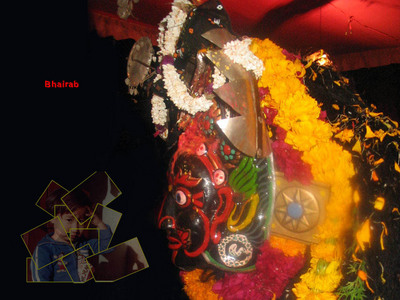 ] Kali (Budi) Bhairab [http://en.wikipedia.org/wiki/
] Kali (Budi) Bhairab [http://en.wikipedia.org/wiki/ ] Indrayani [http://en.wikipedia.org/wiki/
] Indrayani [http://en.wikipedia.org/wiki/ ] Barah [http://en.wikipedia.org/wiki/
] Barah [http://en.wikipedia.org/wiki/ ] Kumari [http://en.wikipedia.org/wiki/
] Kumari [http://en.wikipedia.org/wiki/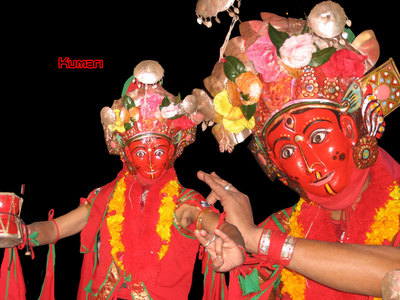 ] Bishnuvi [http://en.wikipedia.org/wiki/
] Bishnuvi [http://en.wikipedia.org/wiki/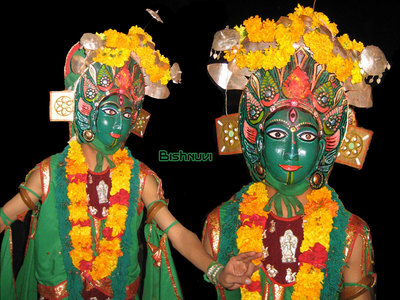 ] Bramhayani [http://en.wikipedia.org/wiki/
] Bramhayani [http://en.wikipedia.org/wiki/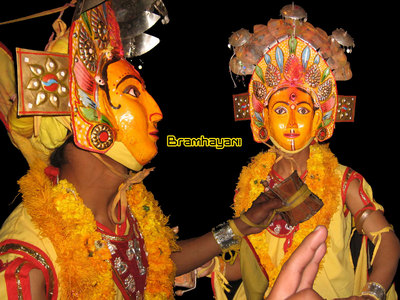 ] Ganga [http://en.wikipedia.org/wiki/
] Ganga [http://en.wikipedia.org/wiki/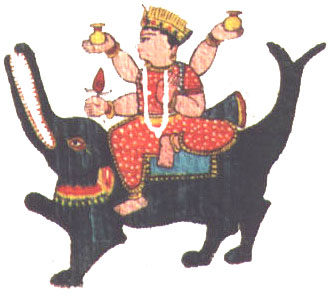 ] Ganesh [http://en.wikipedia.org/wiki/
] Ganesh [http://en.wikipedia.org/wiki/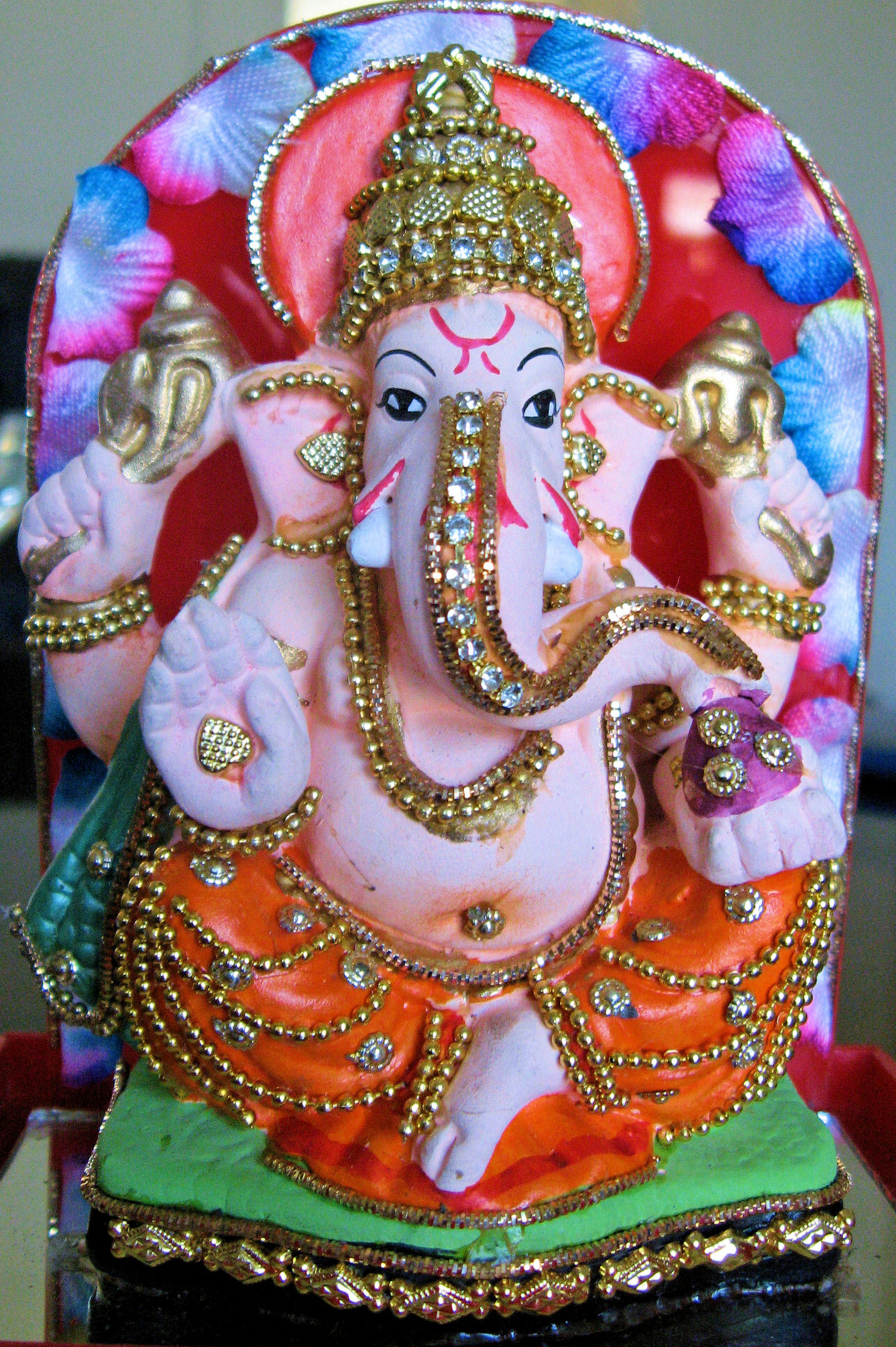
] Kwancha [http://en.wikipedia.org/wiki/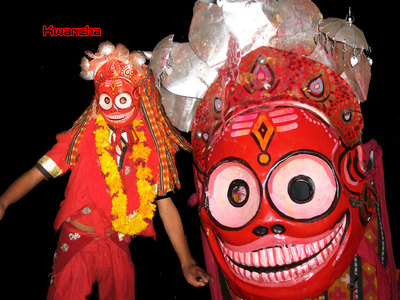 ] Bhuccha [http://en.wikipedia.org/wiki/
] Bhuccha [http://en.wikipedia.org/wiki/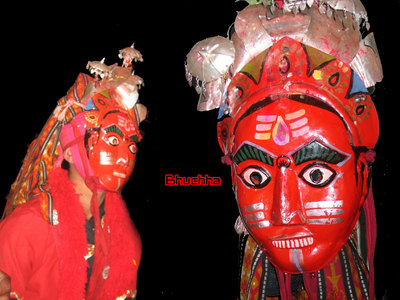 ] Dagini [http://en.wikipedia.org/wiki/
] Dagini [http://en.wikipedia.org/wiki/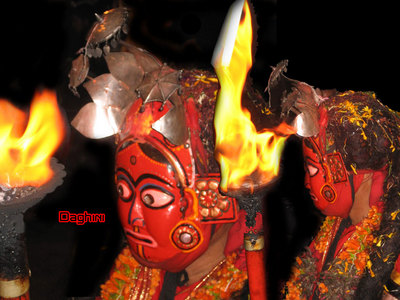 ]
] External links
* [http://unesdoc.unesco.org/images/0005/000548/054841eo.pdf Shaphalya Amatya, "Some aspects of cultural policy in Nepal", UNESCO, p. 13]
Wikimedia Foundation. 2010.
